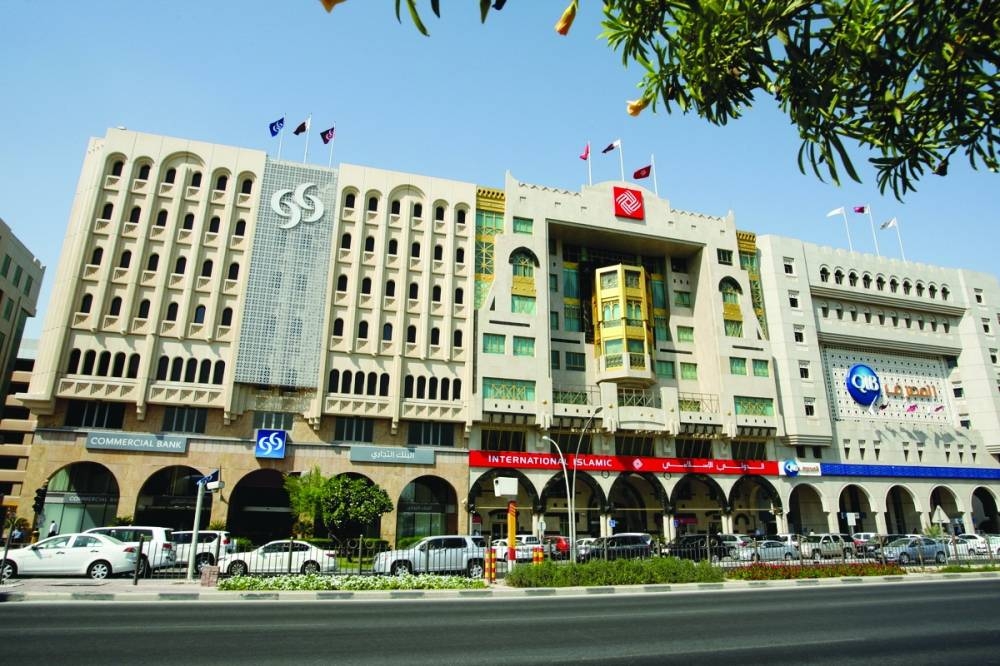Qatari banks have seen their operating environment improving considerably thanks to favourable hydrocarbon prices in 2022, which helped them reduce their reliance on external funding.
Leading credit rating agencies see a stable outlook on Qatari banks’ operating environment amid regional and global economic challenges.
Local banks’ external debt is expected to drop this year and analysts believe there may be a broad stabilisation over the next couple of years.
According to QNB Financial Services (QNBFS), Qatar banking sector's total assets had gone up 0.1% until October this year, totalling QR1.83tn.
Driven by the private sector, the Qatari banking sector saw overall loans increasing by 0.4% to QR1.22tn in October, QNBFS said.
Loans have edged up by 0.2% so far in 2022, compared to a growth of 7.8% in 2021. Loans grew by an average 7.6% over the past five years (2017-2021), QNBFS said.
Deposits declined by 1.1% during October 2022 to QR954.2bn, due to a drop both in non-resident and public sector deposits.
Deposits have gone down by 2% so far in 2022, compared to a growth of 7.6% in 2021. Deposits grew by an average 6.1% over the past five years (2017-2021), the report said.
The pandemic impact on the Qatari banks' financial profiles has been contained due to the government’s fiscal response, Fitch Ratings said recently.
The sector's healthy asset-quality metrics have largely stabilised (end-H1, 2022 average Stage 3 loans ratio: 2.8%) despite the Qatar Central Bank's (QCB) credit deferrals winding down since end-Q1,2022.
Qatari banks’ profitability is strengthening, underpinned by higher interest rates and increasing economic activity. Loan impairment charges (LICs) generally reduced.
As a result, Fitch Ratings noted the sector-average operating profit/risk-weighted assets (RWAs) ratio increased to 3% in H1,2022 (annualised; 2021: 2.5%; 2019: 2.8%).
Qatari banks maintain adequate capital buffers (end-H1, 2022 average common equity Tier 1 ratio: 13.7%; minimum regulatory requirement: 8.5%). The sector's healthy pre-impairment operating profitability and adequate provisioning levels mitigate asset-quality risks.
Net profit of the Qatari banks rose 4% year-on-year in the first half of 2022, driven by widening net interest margins and higher non-interest income, credit rating agency Moody’s said.
The Qatari banks Moody's rates reported an aggregate net profit of QR12.9bn in the review period.
Qatar banks are expected to see improvement in bottom-line and return on assets should reach pre-Covid levels by 2023, a top Moody’s executive said in September.
"We expect the banks' bottom-line profitability to continue to improve in 2022 as operating income continues to grow, while provisioning charges should stabilise," Nitish Bhojnagarwala, vice president, senior credit officer, Moody's told a roundtable.
Qatari banks external debt is expected to drop by 8% this year, credit rating agency S&P said and noted there may be a broad stabilisation over the next couple of years.
This, S&P said, will be due to many factors including high oil prices that should result in stronger domestic deposit growth than was seen over the past few years.
S&P also expects Qatari banks financing needs to ease as several large infrastructure projects are delivered.
New central bank rules, it said, have increased reserve requirements for short-term non-resident deposits and the weight of non-resident deposits in the calculation of bank's liquidity coverage and the net stable funding ratios, which will deter banks from using external sources to grow their balance sheets further.
Beyond the risks stemming from banks' short-term external funding profiles, the financial system coped well with the pandemic and the subsequent withdrawal of forbearance measures, S&P noted.
The largest financial institution in the Middle East and Africa (MEA) region, QNB had earned a net profit (before the impact of hyperinflation) of QR12.3bn in nine months up to September, up 20% on the same period last year.

Leading credit rating agencies see a stable outlook on Qatari banks’ operating environment despite regional and global economic challenges

